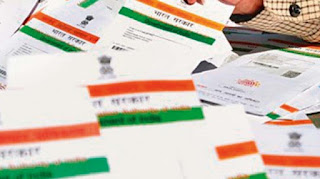By Udumula Sudhakar Reddy
Scientists from Harvard Medical School and the city-based Centre for Cellular and Molecular Biology, along with researchers across the globe, working on ‘The Simons Genome Diversity Project’ have found that all humans have evolved from a single population in Africa.
This social group of humans had migrated in a single exodus to different countries one lakh years ago. The initial fossil study by archaeologists that stated that social life existed only 50,000 years ago has now been corrected by genetic studies.
CCMB scientist Kumaraswamy Thangaraj, considered to be the country’s top population geneticist, and Prof. Lalji Singh were part of the team that sequenced 300 genomes from 142 ethnic populations including the Andamans and a few samples from South India.
CCMB provided genome data
HMS researchers found that the ancestors of modern humans began to differentiate about two lakh years ago, long before the migrating out of Africa. Science journal Nature published the findings online recently, it will come into print next week.
When contacted, Dr Thangaraj said, “We have contributed to the study through the Andamanic genome sequencing which we have been working on. Similarly, several scientists from many countries worked on it and the study is a combination of all this. Throughout the world 300 individual genomes were studied to arrive at a conclusion that humans started out of Africa 100,000 years ago. More details will be revealed in the print.”
New York-based Simon Foundation has announced on its website that the Genome Diversity Project reveals faster accumulation of mutations in non-Africans.
“Analysing genomes from 300 individuals from 142 populations, an international team of scientists has produced an unprecedentedly high-resolution picture of human diversity. With the data, the scientists identified previously unknown features of human genome variation including a difference in the rate at which non-Africans and Africans have accumulated mutations,” stated the foundation on its website.
Mr David Reich, a geneticist at Harvard Medical School and the Howard Hughes Medical Institute, led the project. Mr Swapan Mallick, bio-informatic systems director in the Reich Labs, was first author of the study.
According to scientists, the idea that one or a few genetic changes had caused great changes in human behaviour as per archaeological records around 50,000 years ago was not consistent with their data.
The rapid transformations in the behavior of modern humans were probably driven by cultural innovations or exposure to new environments.
Daily Mail UK, quoting the HMS researchers, stated that scientists inferred that the population ancestral to all present-day humans began to develop substructure at least 200,000 years ago.
Ancestral findings
All populations of modern humans found outside of Africa stem from a single ancestral African population.
Evolution of tool-making, hunting, ornamentation and other cultural activities were probably not driven by changes to a single neuronal gene or even a handful of them.
Scientists from Harvard Medical School and the city-based Centre for Cellular and Molecular Biology, along with researchers across the globe, working on ‘The Simons Genome Diversity Project’ have found that all humans have evolved from a single population in Africa.
This social group of humans had migrated in a single exodus to different countries one lakh years ago. The initial fossil study by archaeologists that stated that social life existed only 50,000 years ago has now been corrected by genetic studies.
CCMB scientist Kumaraswamy Thangaraj, considered to be the country’s top population geneticist, and Prof. Lalji Singh were part of the team that sequenced 300 genomes from 142 ethnic populations including the Andamans and a few samples from South India.
CCMB provided genome data
HMS researchers found that the ancestors of modern humans began to differentiate about two lakh years ago, long before the migrating out of Africa. Science journal Nature published the findings online recently, it will come into print next week.
When contacted, Dr Thangaraj said, “We have contributed to the study through the Andamanic genome sequencing which we have been working on. Similarly, several scientists from many countries worked on it and the study is a combination of all this. Throughout the world 300 individual genomes were studied to arrive at a conclusion that humans started out of Africa 100,000 years ago. More details will be revealed in the print.”
New York-based Simon Foundation has announced on its website that the Genome Diversity Project reveals faster accumulation of mutations in non-Africans.
“Analysing genomes from 300 individuals from 142 populations, an international team of scientists has produced an unprecedentedly high-resolution picture of human diversity. With the data, the scientists identified previously unknown features of human genome variation including a difference in the rate at which non-Africans and Africans have accumulated mutations,” stated the foundation on its website.
Mr David Reich, a geneticist at Harvard Medical School and the Howard Hughes Medical Institute, led the project. Mr Swapan Mallick, bio-informatic systems director in the Reich Labs, was first author of the study.
According to scientists, the idea that one or a few genetic changes had caused great changes in human behaviour as per archaeological records around 50,000 years ago was not consistent with their data.
The rapid transformations in the behavior of modern humans were probably driven by cultural innovations or exposure to new environments.
Daily Mail UK, quoting the HMS researchers, stated that scientists inferred that the population ancestral to all present-day humans began to develop substructure at least 200,000 years ago.
Ancestral findings
All populations of modern humans found outside of Africa stem from a single ancestral African population.
Evolution of tool-making, hunting, ornamentation and other cultural activities were probably not driven by changes to a single neuronal gene or even a handful of them.









